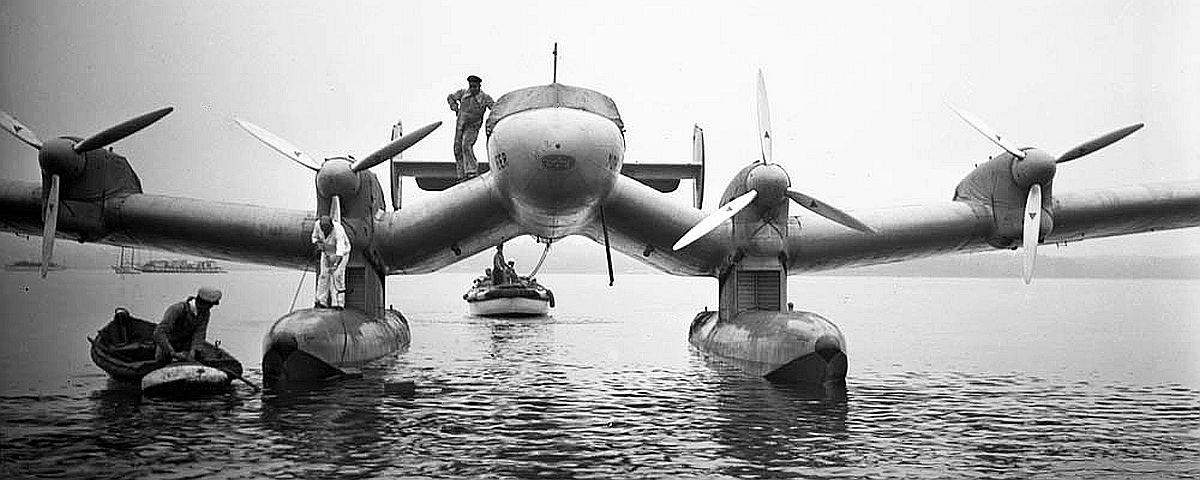
The inboard engines were mounted at the joint between the inboard anhedral and outboard dihedral wing sections, above the pylon-mounted floats.
Further development of the Ha 139 led to the land based version Blohm & Voss BV 142 which had its first flight in October 1938.
A Ha 139 on board the catapult ship Friesenland.
The aircraft were flown by Deutsche Luft Hansa on transatlantic routes between 1937 and 1939, predominately between Bathurst, The Gambia and Natal, Brazil. Catapult-launched from an aircraft tender they were able to transport 500 kg of mail over a distance of up to 5,000 km.
On the outbreak of World War II, the planes were transferred to the Luftwaffe and used for transport, reconnaissance and minesweeping work over the Baltic Sea. They were not particularly suited for military use.

General characteristics
Crew: 4-5
Length: 20.07 m
Wingspan: 29.5 m
Height: 4.8 m
Wing area: 130 m2
Empty weight: 10,340 kg
Gross weight: 19,000 kg
Powerplant: 4 × Junkers Jumo 205C 6-cyl. opposed piston diesel engines, 447 kW (599 hp) each for take-off
Propellers: 3-bladed variable-pitch metal propellers
Maximum speed: 288 km/h at 3,000 m
Cruise speed: 238 km/h (maximum) at 2,000 m
Economical cruise speed: 200 km/h
Ferry range: 4,600 km at 238 km/h, 4,950 km at 200 km/h
Rate of climb: 2.833 m/s
Armament: 4 x 7.92 mm MG 15 machine guns in nose, flight deck roof hatch, and staggered fuselage lateral mountings


Ei kommentteja:
Lähetä kommentti
Kaikenlaiset kommentit ovat tervetulleita.